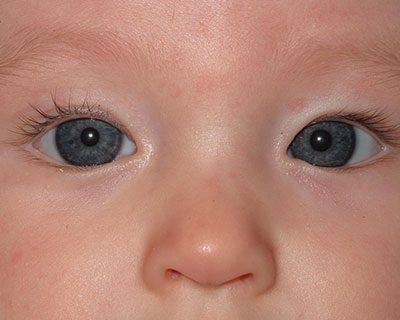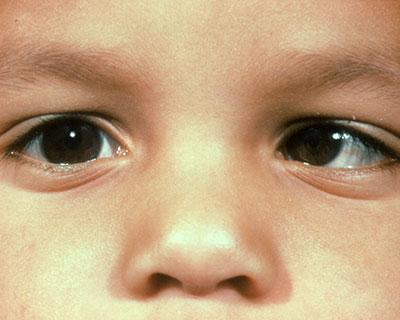What Is Pseudostrabismus?
Pseudostrabismus is when one or both of a child’s eyes look misaligned (crossed), but really they are not. This is unlike strabismus, when the eyes are misaligned, and point in different directions. With strabismus, one eye may look forward while the other eye turns in, out, up, or down. However, with pseudostrabismus, both eyes are pointing forward.
Pseudostrabismus is common in babies from birth to about 18 months old. A child can outgrow pseudostrabismus but not strabismus.
What Causes Pseudostrabismus?
Pseudostrabismus is often due to a baby’s nose having a wide bridge. There are often small folds of eyelid skin on the side of the eye near the nose. These features can make a baby’s eyes look crossed. As a baby grows, these features usually change and pseudostrabismus goes away.
How to Tell Pseudostrabismus from Strabismus
A quick way to tell whether your baby has pseudostrabismus or strabismus is by looking at a flash photo of your baby. In the photo, the baby’s face and eyes should be aimed directly at the camera. Look to see where the light reflects in your baby’s eyes. If your child has pseudostrabismus, light will reflect at the same place in both eyes. This is often easiest to see in the center of the pupil. But if your child has strabismus, light will reflect in a different place in each eye.
Sometimes a baby’s eyes can become misaligned for a short time. An ophthalmologist may do a complete eye exam to rule out any possible signs of strabismus. They will check to see if vision is equal in both eyes or if your child is very nearsighted or farsighted.
Diagnosing pseudostrabismus or strabismus usually gets easier as your child grows. This is because pseudostrabismus gets better over time, while strabismus is likely to get worse.

A child with pseudostrabismus. Although the eyes appear misaligned, the light reflects at the same place in both eyes.

True strabismus. The light does not reflect in the same place in both eyes.
Allowing Good Vision to Develop
It is normal for parents to be concerned that their child may have crossed eyes. Truly misaligned eyes are a problem that must be evaluated and treated.
Pseudostrabismus does not need to be treated. But if your child has strabismus, he or she will need to be treated by an ophthalmologist. Straightening the eyes often allows normal vision to develop.